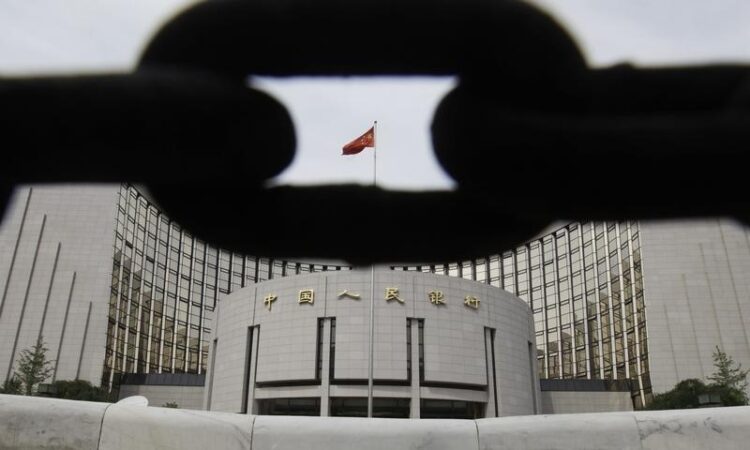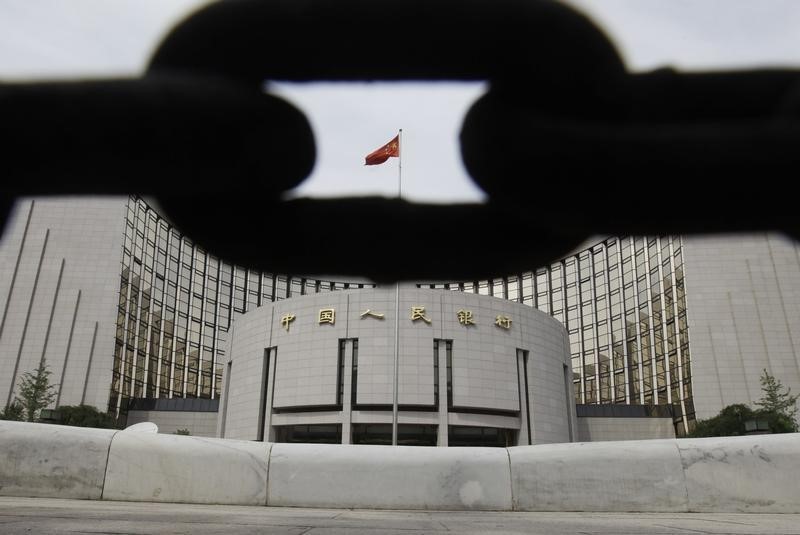

© Reuters.
By Ambar Warrick
Investing.com– The People’s Bank of China (PBoC) kept its loan prime rates unchanged for a third straight month on Monday, as the central bank struggles to strike a balance between shoring up economic growth and curbing further depreciation in the yuan.
The PBoC kept its one-year (LPR), which determines rates on short-term loans, unchanged at 3.65%, while the five-year LPR, which usually factors into mortgage rates, was maintained at 4.30%.
The LPR is used by banks to determine the interest they charge their clients, and is calculated every month based on proposals submitted by 18 designated commercial banks to the PBoC.
The bank had trimmed both LPRs earlier this year in a bid to increase liquidity and support severely slowing economic growth.
A cut in the one-year LPR was aimed at increasing short-term liquidity, while the five-year rate was trimmed to help support China’s struggling property sector, which has also factored into the country’s severe economic downturn this year.
But this dented the , pushing it to lows last seen during the 2008 financial crisis. The hit a record low in September.
The yuan fell 0.5% on Monday, while its offshore counterpart sank 0.6%. The currency was also pressured by uncertainty over U.S. interest rate hikes, which have also been a key source of pressure this year.
China is dealing with its worst COVID-19 outbreak in seven months, which is expected to once again exact a heavy toll on the world’s second-largest economy, as it enacts more lockdowns to curb the spread of the virus.
Rising infections and the measures to combat them have dented recent optimism that the country will scale back its strict zero-COVID policy, which is at the heart of its pronounced economic slowdown this year.
While the country has rolled out a slew of stimulus measures to support economic growth, they are yet to reflect any improvement in the economy. Beijing recently rolled out spending and debt relief measures to help support the beleaguered property sector.
But economic indicators released earlier this month showed that the world’s second-largest economy is struggling to navigate COVID-linked disruptions. and both shrank substantially in October, and are likely to be reflected in a weaker GDP reading for the fourth quarter.





